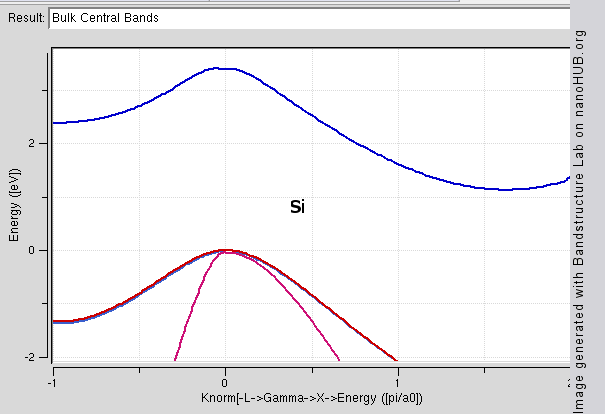Electronic band structure
Category
Published on
Abstract
In solid-state physics, the electronic band structure (or simply band structure) of a solid describes ranges of energy in which an electron is "forbidden" or "allowed". The band structure is also often called the dispersion or the E(k) relationship. It is a mathematical relationship between the electron wave energy and its momentum.

The valence band edge is generally at the 'Gamma' point. This is at zero momentum in the graph below. If the conduction band edge minimum also lies at the Gamma point the material is said to be direct type e.g. InAs or GaAs. This means that there can be a transition between the highest valence band point and the lowest conduction band point without a change of momentum. This means that a photon, which has virtually no momentum can excite an electron from the valence to the conduction band. However if the minim conduction band edge is not at the Gamma point for example at the X point for for Si or along L for Ge then it is called as indirect bandgap material. In that case a photon cannot simply excite an electron from the valence band to the lowest point in the conduction band. A phonon is needed to compensate the momentum change.
Credits
Image rendered using nanoHUB tool
Band Structure Lab (http://nanohub.org/tools/bandstrlab).
Cite this work
Researchers should cite this work as follows: